Judo and Brazilian jiu jitsu are martial arts with similarities. In fact, compared to most martial arts, these two don’t allow you to strike your opponent. These are so-called “grappling” sports. Another similarity, in terms of equipment, is that fighters wear kimonos in both judo and Brazilian jiu jitsu. But there are differences between them. Let’s find out which ones.
The weight of the kimono:
The judo kimono is fairly heavy, with the weight limit accepted in competition according to IJF standards being 750 Gr/m². Judo kimonos weigh around 500 gr/m² for beginners who don’t have very experienced opponents. They can go up to almost 1 kilo/m² for fighters who appreciate a heavy, sturdy kimono.
For Brazilian Jiu Jitsu, kimonos are generally lighter. For beginners, you can count on between 250 and 400 Gr/m². Advanced fighters most often use kimonos between 500 and 650g/m² .
The kimonos are lighter to allow freer movement, as fighting takes place on the ground.
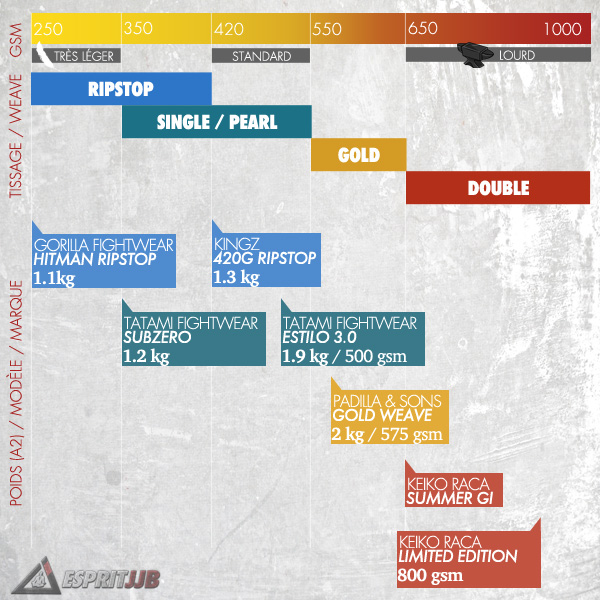
Weaving judo and jiu jitsu kimonos:
For kimonos, there are several types of weave: rice grain, single weave, double weave, pearl, or for Brazilian jiu jitsu, the “gold” weave, the perfect balance between single and double. This type of weave combines the lightness of “single” kimonos with the strength of “double” kimonos.
There’s also“Ripstop“, a very light and hard-wearing fabric that gives your opponents a better grip. This material is often found on judo kimono pants. But this fabric is not authorized for international competitions according to IBJJF rules.
To choose your weave, you need to consider what you’re looking for: either lightness or strength. For a reasonable price, you can easily find good quality kimonos. If you have a fairly high level of skill, choose premium fabrics such as gold or pearl weave (light but resistant).
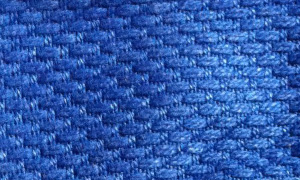
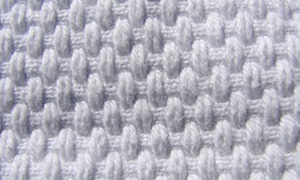
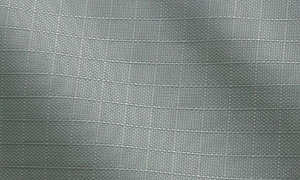
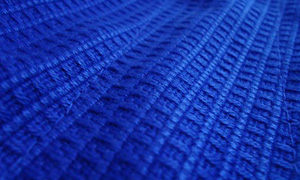
Curved or wide cut:
The cut of the judogi is wide enough to allow the opponent to grab the fighter. In Brazilian jiu jitsu, the opposite is true: the cut is very slim, making it difficult to grip. The sleeves of Brazilian jiu jitsu kimonos are fairly tight and close to the arm, unlike judo kimonos, which require a fairly substantial space between the arm and the fabric, between 10 and 15 cm. The same applies to the legs.
According to IJF (International Judo Federation) rules, the judogi jacket must cover the buttocks, falling 5 to 10 cm below the buttocks.
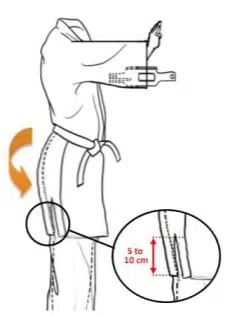
The color of the judo and Brazilian jiu jitsu kimono:
In judo, only two colors are authorized and present to distinguish the two opponents: white and blue. In Breilian jiu jitsu, during training sessions or unofficial competitions, practitioners may wear blue, black or green kimonos… But in competition, only 3 colors are allowed: white, blue and black.
Some practitioners train without kimono jackets for greater comfort.
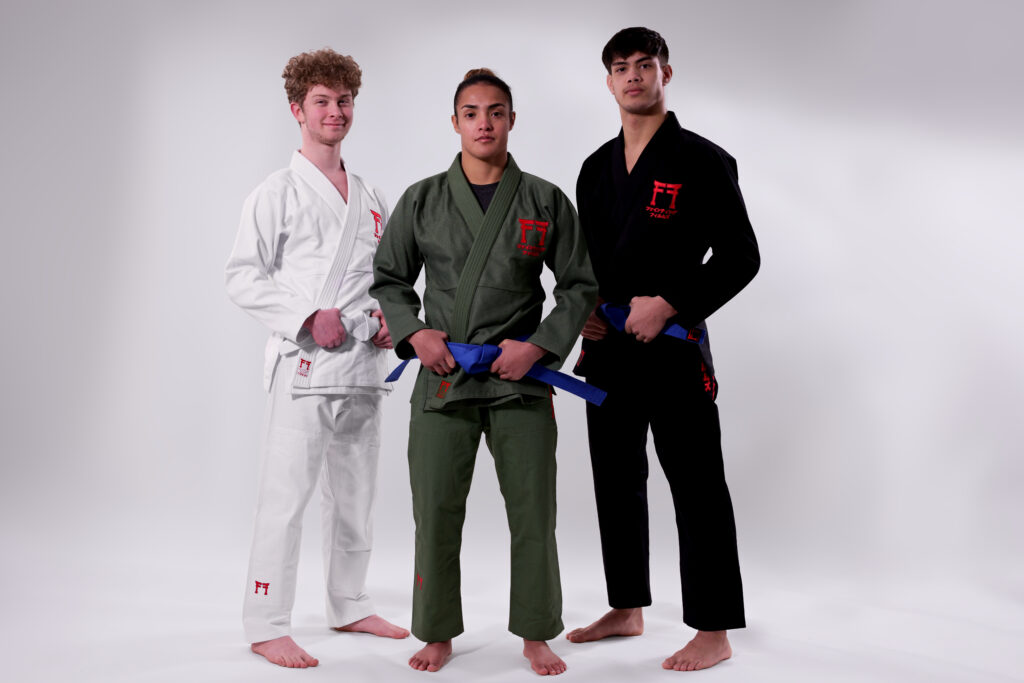
Brazilian jiu-jitsu kimono
Simple or original design:
While judo kimonos are fairly simple, with the kimono supplier’s logo on the shoulders, bibs with the fighter’s name and sometimes embroidery with the logo of the fighter’s club or country. In jiu jitsu, designs are much freer, with patches taking up a lot of space on the kimono.
You can equip your Brazilian jiu jitsu kimonos with personalized patches on almost the entire kimono.
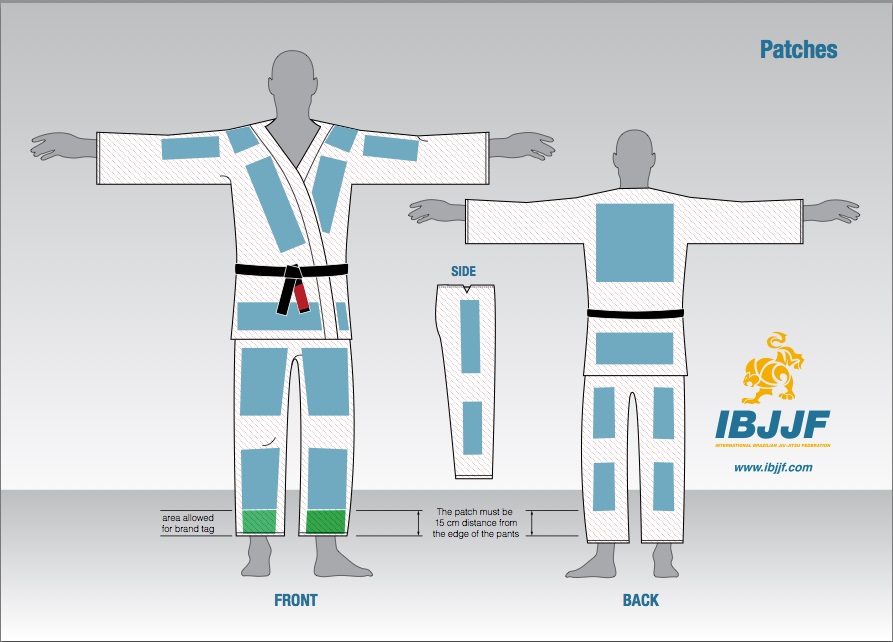
If you’re a beginner to Brazilian jiu jitsu, and practice the sport on anoccasional basis, you can always use a judo kimono like the Red Label.


